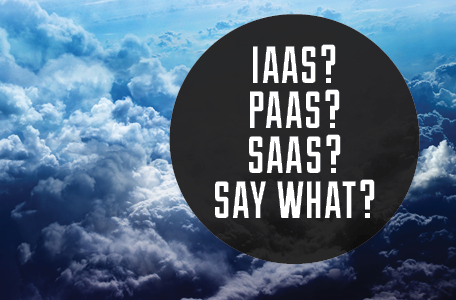IaaS? PaaS? SaaS? Say What?

 It seems anything technology related is laden with the term cloud computing or cloud services. Other cloud related buzzwords that are getting louder include PaaS, IaaS and SaaS. If you’re not entirely sure what they mean, you’re in good company. Let’s take a closer look at the three cloud acronyms that marketers need to understand for future marketing strategy deployments. For starters, cloud computing refers to access applications, data or services run on virtual servers that access a pool of resources from many physical servers, rather than programs run on individual physical machines. Cloud computing allows servers to expand or contract to meet changing needs without complicated transfers, expensive hardware purchases or wasting power.
It seems anything technology related is laden with the term cloud computing or cloud services. Other cloud related buzzwords that are getting louder include PaaS, IaaS and SaaS. If you’re not entirely sure what they mean, you’re in good company. Let’s take a closer look at the three cloud acronyms that marketers need to understand for future marketing strategy deployments. For starters, cloud computing refers to access applications, data or services run on virtual servers that access a pool of resources from many physical servers, rather than programs run on individual physical machines. Cloud computing allows servers to expand or contract to meet changing needs without complicated transfers, expensive hardware purchases or wasting power.
The cloud has various layers or stacks on which different aspects of the hardware and applications reside. The three layers are Infrastructure-as-a-Service (IaaS), Platform-as-a-Service (PaaS) and Software-as-a-Service (SaaS). Infrastructure sits at the bottom, Platform in the middle and Software on top.
Infrastructure-as-a-Service, or IaaS is the first major layer of the cloud and sits at the base. This bottom-most layer refers to the very basics: hardware. IaaS companies offer customers off-site servers, storage and networking hardware. Some in the industry refer to this layer as hardware-as-a-service. Customers no longer have to invest in expensive hardware — it all resides elsewhere and customers simply rent it and access it over the Internet. Not only does IaaS allow customers to buy into the most recent technology, these customers save themselves the expense of maintaining on-site hardware and save themselves space allotment. The hardware is off-site, so no need to reserve office space at a specified temperature to safely house hardware. Not all IaaS companies offer the same thing — while they all focus on hardware, some also offer raw computing power, block level storage and Web hosting.
PaaS, Platform-as-a-Service, is the second major layer of the cloud. Some companies also call it middleware, and it includes Web application management, application design, application hosting, file storage, security and application development. The upside for customers using PaaS is they save money on hardware and make collaboration simpler for a decentralized workforce. Ideally, development happens at this layer.
SaaS, Software-as-a-Service, is the third and final layer of the cloud. The SaaS is an application hosted on a remote server and accessed over the Internet — this is the layer most people are familiar with. These applications are usually accessible through a Web browser. However, not every application hosted on a remote server and accessed over the Internet is SaaS. The application must be virtualized, fully scalable, managed by the host and offer a single access point.
The marketing challenge has always been how to offer customers the best product when they most need it. Cloud computing by its very nature is agile and expandable, giving marketing departments the flexibility they need to respond to consumer needs and trends. Most cloud platforms feature robust plug-in support for analytics, letting managers monitor the efficiency of the system and the department’s methods. Because cloud services can be set up in minutes without requiring any special hardware or software, it reduces cost and lets employees start working with the new system immediately. With the cloud’s near-infinite flexibility and power, marketers can focus on their work without worrying about running out of storage or computing capacity.
